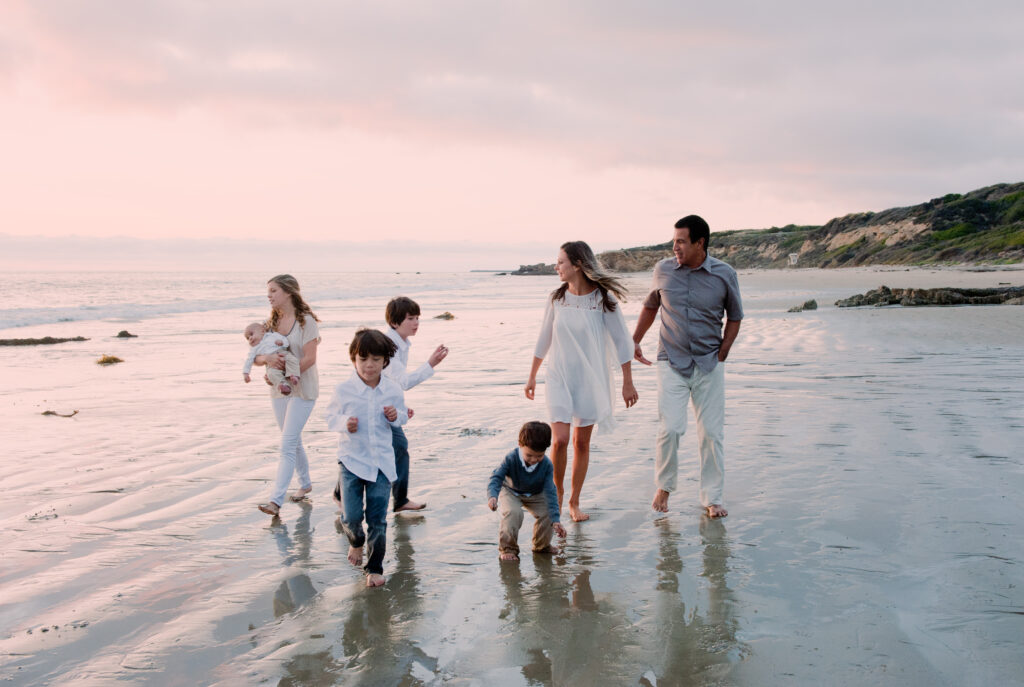Getting kids on board early with sun protection is crucial — but it isn’t always easy. Our expert dermatologists share their best practices to make sun care a daily habit at every age.
By Cathy Cavender
Parents have the power to instill many health life lessons in their children, such as brush their teeth twice a day, eat their veggies, always buckle up and never smoke. One more vital action to add to these basics: protect their skin from the sun. Research has shown that 90 percent of the two most common types of skin cancer, basal cell carcinoma (BCC) and squamous cell carcinoma (SCC), are associated with ultraviolet (UV) exposure, and they can be serious and disfiguring. Just one blistering sunburn in childhood or adolescence more than doubles a person’s chances of developing melanoma, which has a higher chance of spreading than other types of skin cancer. Indoor tanning increases the risk of all three main types of skin cancers. Getting kids into the habit of daily sun protection, including sunscreen, clothing and seeking shade, helps ensure that they’ll practice it for the rest of their lives. And the best time to start is … right at the start.
Newborns to 6 Months
The challenges: You’ll never encounter less resistance to sun-protective measures from your child than you will at this stage of life. Enjoy it! Challenges may come from outside pressures — going on an annual family beach vacation, for instance, or attending outdoor events.
What You Can Do
Avoid it: The consensus of our experts is clear: Babies need to be kept out of the sun, period. Dermatologists also advise against using sunscreen on babies under 6 months due to their delicate skin. “You don’t want to introduce a rash, or risk ingestion,” says Brooke Jackson, MD, a board-certified dermatologist and owner of Skin Wellness Dermatology Associates in Durham, North Carolina.
Keep them covered: If infants must be outside during the peak sun hours of 10 AM to 4 PM, use everything in your arsenal to protect them: Look for shade, use stroller awnings, and provide physical protection including a hat, sunglasses and sun-protective clothing.
Instruct (and remind) caregivers, too: Babysitters, day-care providers and family may mean well, but don’t assume they’re following your rules. Be a clear and consistent enforcer! “Your interview questions should include, ‘Will teachers remind or assist kids with wearing hats and reapplying sunscreen? Do they have outdoor shelter from the sun?’” says Allison Zarbo, MD, a pediatric dermatologist at Henry Ford Health in Detroit, who recently vetted day-care facilities for her new baby.
Model good behavior: Lay the groundwork for a lifetime of sun safety by wearing sunscreen and taking other sun-protective measures yourself daily. They’re watching, and it’s never too early to set a good example.
Toddlers to Tweens
The challenges: At this age, kids can be squirmy or downright resistant when you try to apply sunscreen. It’s often a battle of wills. “Toddlers don’t have control of what’s going on in their world, but they have opinions,” says Dr. Zarbo. Also, if kids are in outdoor activities at day care, preschool or camp, caregivers may not be as vigilant about reapplying sunscreen as you would like.
My son was told at sleepaway camp that he looked good when he was tan, says Dr. Wechsler.
What You Can Do
Establish habits: At 6 months, it’s time to apply sunscreen to babies’ exposed skin. Fragrance-free “physical” sunscreens, with mineral active ingredients zinc oxide and titanium dioxide, are least likely to cause a reaction in sensitive skin. Keep up with covering up, too. Introduce cool rash guards with ultraviolet sun protection (UPF), hats, sunglasses — and seek shade when available.
Get them involved: Toddlers like to feel in control, so give them choices and let them help in the application process. Little hands can grip a sunscreen stick. “If kids don’t like things being put on their skin, some of my patients get a foundation brush for their toddlers to use to apply sunscreen,” says Dr. Zarbo. While sunscreen spray is fun, make sure to avoid inhaling by spraying it into their hands and letting them rub it in.
Make it fun: Children can be squirmy. To get the job done, master the art of distraction. Sing songs, create easy-to-remember mantras. “I like to say, ‘If you can see, then there’s UV!,’” says Elizabeth Buzney, MD, a dermatologist at Brigham and Women’s Health in Boston and Chestnut Hill, Massachusetts. “Teach your child that UV stands for ultraviolet light from the sun and that you need to protect the skin from it during the daylight hours,” she says. You can even add a few drops of food coloring or superfine glitter to make sunscreen more exciting for little ones.
Enlist help: Talk to a director at your child’s day care, school, camp or athletic facility to ensure they can enforce sunscreen application. Ask if they have shade or shade structures to provide some relief from the sun during peak hours. You may have to be proactive.
Teenagers
The challenges: Unfortunately, the idea that tanning is attractive still has a deep hold and can be tough for even a committed parent to combat. And it’s not just peers who may be pressuring teens to tan. Dr. Jackson remembers a young patient whose cheerleading coach suggested the squad go to a tanning salon before a competition. “That’s criminal,” she observes. “It’s like telling your kid to go over in a corner and smoke a cigarette.” In fact, it’s worse: More people develop skin cancer from indoor tanning than develop lung cancer from smoking. No wonder the practice is banned in Australia and Brazil, and it is outlawed for people under 18 in 11 other countries and 20 states (plus Washington, D.C.).
Boys can feel pressured to tan as well. “My son was told at sleepaway camp that he looked good when he was tan,” remembers Amy Wechsler, MD, a New York City dermatologist and psychiatrist. Teens of both sexes (and adults) who are into outdoor sports have the challenge of keeping exposed skin protected for hours at a time. Dr. Jackson, herself a 10-time marathoner, observes that in the running community, it’s popular to run with fewer clothes. “You’re doing great things for your body and your mental health, but years of being outdoors adds up,” she says.
What You Can Do
Make sun care part of skin care: Use a teenager’s natural interest in their appearance to make the case for sun protection. Many skin-care products and cosmetics contain broad-spectrum sunscreen, and it’s a good way to motivate them to wear sunscreen daily. “Kids have to like the product, the way it feels and smells, or they’re not going to wear it,” says Dr. Buzney. Cute rash guards, cover-ups, sunglasses and wide-brimmed hats are also easy and fashionable ways to sneak in sun protection.
Be direct: Have an honest conversation about the dangers of tanning — and that there’s no such thing as a “healthy tan.” If your teen burns, push harder on the need for UPF clothing, hats, sunglasses and shade.
Get real about social media: Remind your teen that social media is full of retouched images, skin-enhancing filters and dangerous misinformation. Suggest board-certified dermatologists your teens can follow for accurate info. (And SkinCancer.org, of course!)
Fake it: A self-tanner is an option if teens insist on tan skin for a special event. Just make sure they still cover up and use sunscreen; a faux glow won’t protect. “I tell my patients to get it before the beach vacation, so they don’t feel the need to sit out in the sun to get a tan,” Dr. Buzney says, while reminding them that a fake tan provides minimal protection from UV rays. Sunscreen is still a must.
Bottom line: Since people acquire approximately 25 percent of their lifetime UV damage before age 18, you can’t start teaching kids about sun protection too soon. “When I was growing up, my parents felt very strongly about not smoking and always wearing a seatbelt in a car, and I’ve never smoked and never not worn a seatbelt,” says Dr. Wechsler. “With my kids, I added helmets for biking and skiing — and sun protection.” Chances are, those are lessons her kids will take to heart.





